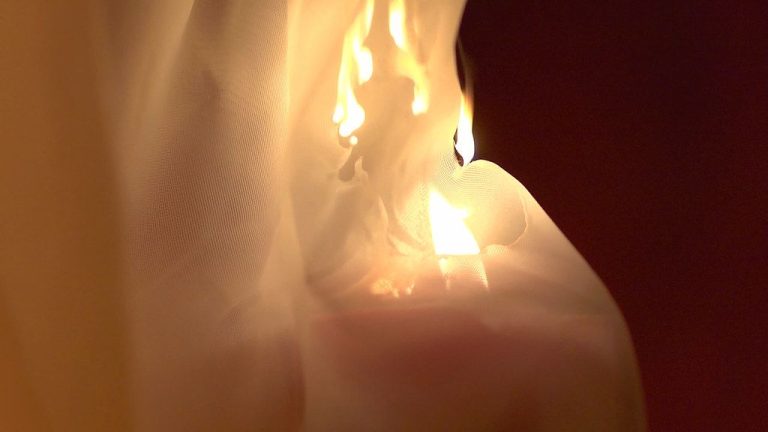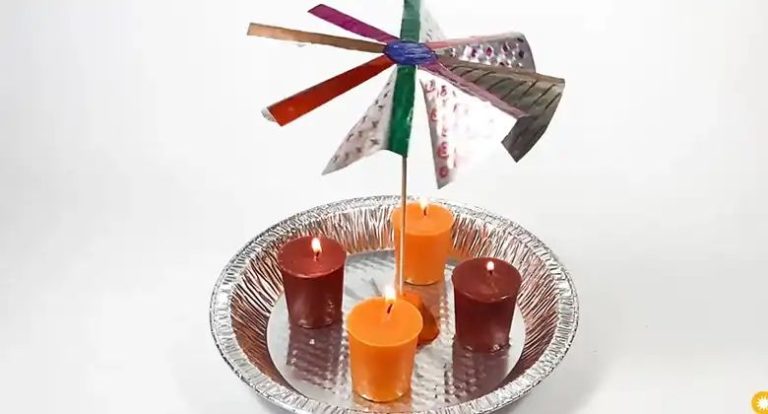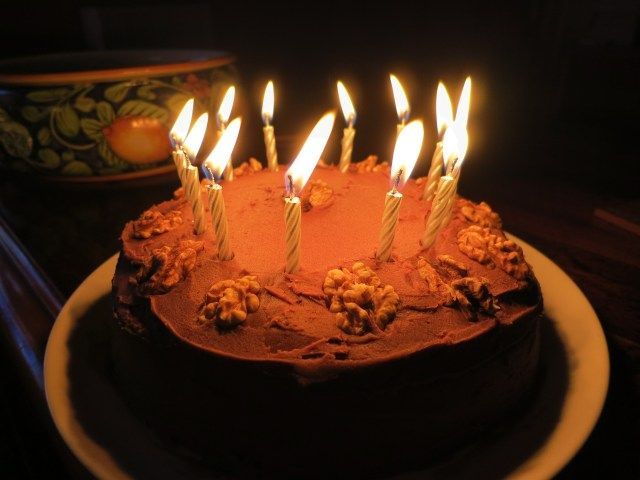How Do You Deal With A Dripping Candle?
Identify the Cause of the Dripping
A candle that’s dripping wax is usually caused by one of three things: the candle is too hot, the wick is too long, or the wax is poor quality. Let’s look at each of these in more detail:
If the candle is too hot, the wax will melt and drip down the sides. This often happens if the candle burns for too long or if it’s too close to a heat source like a radiator or fireplace. The flame on a hot candle will be quite large as well.
Another common reason for dripping is a wick that’s too long. The wick should be trimmed to 1⁄4 inch before lighting to prevent it from getting immersed in the melted wax. A long wick causes the wax pool to get too hot and overflow.
Finally, cheap or poor quality candle wax may not hold its shape when lit and can start dripping even if the wick length and temperature are ideal. Seek out reputable candle makers that use high-quality waxes like beeswax, soy wax, or paraffin wax specifically blended for candles.
By identifying if the dripping is caused by overheating, a too-long wick, or low-grade wax, you can take steps to remedy the situation. Trim the wick, let the candle cool, and move it away from heat sources. If needed, replace old or inferior quality candles with ones made of premium waxes to prevent excess dripping.
Trim the Wick
One of the most common causes of a dripping candle is having a wick that is too long. As the candle burns, a long wick will create a larger flame that melts the wax faster than a shorter wick. Trimming the wick to the proper length can help stop excess dripping.
Use either a wick trimmer or small scissors to carefully trim the wick to around 1⁄4 inch. Make sure not to trim too low to the wax or the wick may become too short to properly burn. Aim to trim just the blackened portion of the wick so that fresh wick is exposed. This will create a smaller flame and slower wax pool for a cleaner burn.
Be sure to blow out the candle and allow it to fully cool before attempting to trim the wick. And trim carefully over a nonflammable surface in case any sparks fly. Periodically check and re-trim the wick as needed while burning to maintain the ideal 1⁄4 inch length.
Let the Candle Cool
One of the most effective ways to stop a candle from dripping is to simply let it cool down completely before lighting it again. When a candle burns, the wax around the wick melts from the heat. If the melted wax pools reach the side of the candle, it can start dripping down the sides.
To prevent this, it’s important to allow the candle to cool and harden again. After blowing out the flame, wait at least 2-3 hours before relighting to give the wax plenty of time to set. The cooled wax will create a thicker layer around the wick and help stop dripping when lit again.
Letting the candle cool also allows some of the excess melted wax to be reabsorbed into the candle. This prevents too much liquid wax from accumulating around the wick. It’s best to put the candle in a place without drafts so the wax can cool and harden evenly.
Relighting a completely cooled candle will help get a cleaner, drip-free burn. Be patient and wait for the wax to fully set before lighting again. This simple step can prevent messes and drips from ever starting in the first place.
Place on a Candle Holder
One of the simplest ways to deal with a dripping candle is to place it on a candle holder designed to catch any wax drips. Look for holders made of metal, glass, or ceramic that have a small dish, reservoir, or ring around the base. This contains any melted wax and keeps it from getting on your furniture, floors, or tablecloths.
Make sure the holder is wide and deep enough to catch all the drips. Place the dripping candle firmly in the center of the holder so dripping wax will land in the catch. The reservoir should be an inch or more deep to contain a fair amount of wax. Holders with ridges or patterns also help the wax adhere instead of bouncing off.
Candle holders come in many styles, from rustic and vintage looks to sleek modern designs. Choose one that fits with your existing decor. For added protection place the holder on a heatproof surface. With a proper candle holder, you don’t have to worry about messy candle wax dripping all over the place.
Place on a Nonflammable Surface
When dealing with a dripping candle, it’s important to place it on a nonflammable surface. This helps prevent potential fire hazards and protects your furniture, tables, and decor from wax damage.
Dripping wax can permanently stain wood, cloth, and other surfaces. The heat of the wax as it drips can also scorch or burn materials. Placing a dripping candle directly on a wood table, for example, risks damaging the finish or leaving behind discolored wax marks that are difficult to remove.
Instead, set a dripping candle on a nonflammable surface such as a ceramic or metal plate, glass candle holder, or granite countertop. These materials resist wax stains and are less prone to scorching. They also protect your furniture, tablecloth or other surfaces from damage.
You can also put down inexpensive materials like foil, wax paper, or a paper plate under a dripping candle. This creates a barrier to catch any wax drips before they hit your table or furnishings.
Taking these simple precautions allows you to safely enjoy candles while avoiding potentially expensive repairs or replacements caused by wax damage. A little planning goes a long way to preserve your home decor when dealing with messy dripping candles.
Freeze the Candle
One effective solution for a dripping candle is to place it in the freezer for 1-2 hours to harden the wax. This will stop the dripping and allow the wax to reset.
Be sure to put the candle on a flat, stable surface in the freezer so it doesn’t tip over. Remove all packaging first.
Freezing works because the colder temperature causes the wax to contract and harden. The sudden change from melted to solid state will halt any dripping.
Once frozen, the wax retains enough rigidity to avoid dripping when returned to room temperature. The freezing process essentially resets and stabilizes the candle.
This quick freezer trick solidifies the melted wax into a hardened state again. Just a short time in the cold allows the wax to congeal and stop dripping down the sides.
After freezing, assess if the wick needs trimming before lighting again. Freezing is a fast, effective solution for candles dripping excessively.
Use Foil or Wax Paper
One simple solution for dealing with a dripping candle is to wrap the base with foil or wax paper. This will catch any melted wax drips and prevent them from getting on your furniture, carpet, or tablecloth.
To do this, take a sheet of aluminum foil or wax paper large enough to wrap around the bottom of the candle and overlap at the top. Make sure the foil or paper is flat and smooth with no wrinkles or creases. Then, place the candle in the center and gather the foil or paper up around the base, securing it with some tape or a rubber band.
The foil or wax paper will create a protective barrier to catch any wax that melts down the side of the candle. As the candle burns down, you can readjust the foil to stay snugly around the base. Just be sure to keep an eye on the makeshift wrapper as the candle burns to ensure no wax drips over the top.
Using this simple foil or wax paper method can help reduce messy candle drips and protect your surfaces. Just remember to place the candle on a stable, heat-safe holder as an added precaution.
Repair Dripping Marks
If your candle has already created some dripping marks, don’t worry – they can be repaired. Start by allowing the wax to fully harden and cool. Then, take a paper towel and lightly press it onto the wax drippings to absorb some of the wax. You can also use a iron on a low heat setting to gently melt the wax into the paper towel. Position the paper towel over the wax drippings and lightly run the warm iron over it. The heat will soften the wax so it can be absorbed into the towel.
Be very careful not to get the paper towel or iron too hot, as this could burn or scorch your furniture or walls. Work slowly and carefully. You may need to replace the paper towel several times as it absorbs more wax. The ironing technique can be effective at removing even stubborn wax that has fully hardened. Just take your time and work in small sections until the dripped wax has been fully absorbed from the surface.
Avoid Drafts
Drafts from windows, doors, vents, or fans can cause issues with dripping candles. As air currents blow across the flame, it will flicker and dance in the breeze. This uneven burning can melt the wax unevenly, causing it to pool and drip down the sides.
To prevent dripping from drafts, make sure to place your candle in a stable location away from any vents or fans. Keep windows and doors closed to prevent outside drafts from blowing through. Shield the flame with glass votive holders or hurricane lamps to block air currents. This will help the candle burn straight and even, reducing excess dripping.
A flickering flame caused by drafts will also produce more soot, which can dirty your candleholder or walls. It can also make the candle burn faster, reducing its lifespan. Finding a draft-free spot for candles can help maximize their burn time and prevent messy drips.
Replace Old Candles
One of the most common causes of dripping candles is that the wax has simply deteriorated over time. As a candle burns, the wax slowly loses its structural integrity through the constant melting and re-hardening process. Tiny air pockets and tunnels form within the wax, making it more malleable and unable to hold its shape. Over many burn cycles, the wax can become so compromised that liquid wax begins to drip down the sides no matter what precautions are taken.
For candles that are more than a year or two old, the wax is likely reaching the end of its lifespan. The quality and composition of the wax determines its longevity – cheaper paraffin candles may only last a month or two of occasional use before dripping, while high-quality beeswax or soy candles can often last years without issue. However, no candle lasts forever.
If a candle is visibly deteriorating with excessive dripping, tunneling, or smoke, it’s a sign that the wax is breaking down. At this point, it’s best to retire the candle and replace it with a fresh one. Continuing to use an old candle often exacerbates the issues and can even pose safety risks if the wax loses structural stability while lit. Retiring old candles ensures a better burn experience and reduces fire hazards.



